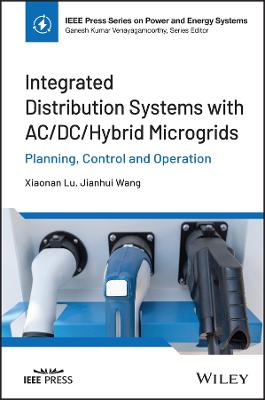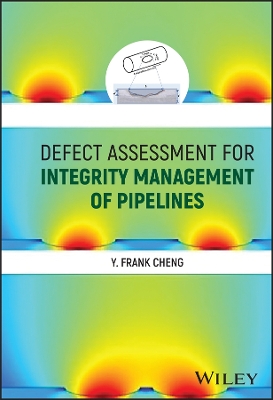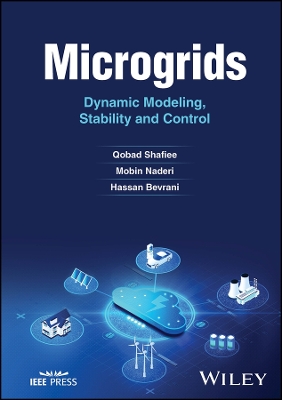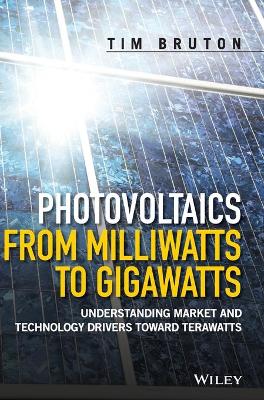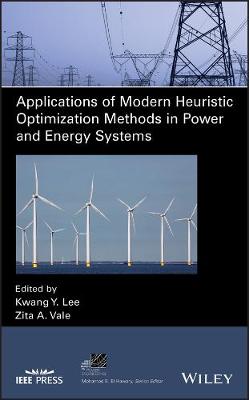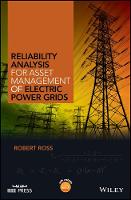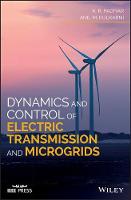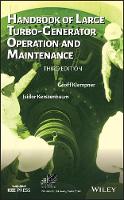Power System Protection
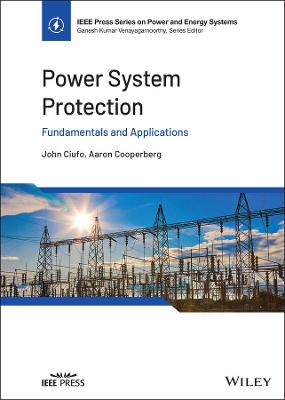 -10%
portes grátis
-10%
portes grátis
Power System Protection
Fundamentals and Applications
Cooperberg, Aaron; Ciufo, John
John Wiley & Sons Inc
01/2022
560
Dura
Inglês
9781119847366
15 a 20 dias
1232
Preface xxi
Acknowledgements xxiii
1 What Is Power System Protection, Why Is It Required and Some Basics? 1
1.1 What Is Power System Protection? 1
1.2 Why Is Power System Protections Required? 2
1.3 Some Basic Protection System Terms and Information 6
References 12
2 Basic Power System Protection Components 13
2.1 General Description 13
2.2 Power System Protection Components 13
2.3 Physical Implementation 21
2.4 Power System Isolation Devices and Control Interfaces 23
2.5 Redundancy Arrangements 24
3 AC Signal Sources 27
3.1 Introduction 27
3.2 Current Transformers 27
3.3 Voltage Sources 53
References 56
4 Basic Types of Protection Relays and Their Operation 57
4.1 General 57
4.3 Overcurrent 59
4.4 Differential 77
4.5 Distance 86
Reference 94
5 Protection Information Representation, Nomenclature, and Jargon 95
5.1 General 95
5.2 Protection Drawing Types 95
5.3 Nomenclature and Device Numbers 108
5.4 Classification of Relays 112
5.5 Protection Jargon 114
Reference 116
6 Per-Unit System and Fault Calculations 117
6.1 General 117
6.2 Per-Unit 118
6.3 Fundamental Need for Fault Information 125
6.4 Symmetrical Components 128
6.5 Sequence Impedances of Power Apparatus 131
6.6 Balanced Fault Analysis 139
6.7 Sequence Networks 140
6.8 Summary of Unbalance Fault Calculations 144
6.9 High-Level Summary of the Fault Calculation Process 147
6.10 Useful Fault Calculation Formulas/Methods 148
6.11 Fault Calculation Examples 149
References 157
7 Protection Zones 159
7.1 Protection Zones General 159
7.2 Zones Defined 159
7.3 Zone Overlap Around Breakers 161
7.4 Protection Zoning at Stations 163
7.5 Protection Zones in General 170
7.6 Backup Protection 177
7.7 CT Configuration and Protection Trip Zones 178
7.8 Where Protections Zones do not Overlap Around Breakers 182
7.9 Lines Terminating Directly on Buses at a HV Switching Station 183
8 Transformer Protection 185
8.1 Introduction 185
8.2 General Principles 185
8.3 Differential Protection Power Transformers 186
8.4 Percent Differential Protection Autotransformers 220
8.5 Transformer Percent Differential Setting Examples 227
Reference 235
9 Bus Protection 237
9.1 Introduction 237
9.2 Typical Bus Arrangements 237
9.3 Bus Protection Requirements 239
9.4 Methods of Protecting Buses 239
9.5 Example High Impedance Differential Protection Setting 264
Reference 267
10 Breaker Failure Protection and Automatic Reclosing 269
10.1 Introduction 269
10.2 Breaker Failure General Background 269
10.3 Breaker Automatic Reclosing General Background 283
11 Station Protection 285
11.1 Introduction 285
11.2 Types of Stations 285
11.3 Station and Protection Architecture 287
11.4 Station Switchgear Type 300
11.5 Sub-Transmission Types and Station Grounding 302
11.6 Master Ground 303
12 Capacitor Bank Protection 307
12.1 Capacitor Banks 307
12.2 Purpose for Shunt Capacitors on Power System Networks 307
12.3 Capacitor Bank Construction 308
12.4 Capacitor Bank Protection 319
12.5 Capacitor Bank Breakers 324
12.6 Capacitor Bank Sample Settings 324
Reference 333
13 Synchronous Generator Protection 335
13.1 Introduction 335
13.2 General 336
13.3 Generator/Unit Transformer Protections 340
13.4 Current Transformers 355
13.5 Generator Protection Sample Settings 356
13.6 Generator Control and Protection Systems Coordination 363
13.7 General Generator Tripping Requirements 369
13.8 Breaker Failure Initiation 370
Reference 370
14 Transmission Line Protection 371
14.1 General 371
14.2 Basic Line Protection Requirements 371
14.3 Impedance Relays and Why Not Just Overcurrent Relays 372
14.4 Distance Relay Response to Fault Types 376
14.5 Apparent Impedance 381
14.6 Redundancy/Backup 388
14.7 Tele-Protection (Also Known as Pilot-Protection) 390
14.8 General Implications 399
14.9 Peripheral Requirements of Distance Protection 400
14.10 Tele-Protection (Pilot-Protection) A Historical Perspective 408
14.11 Tele-Protection via Power Line Carrier 408
14.12 Synchronous Optical Network (SONET) 409
14.13 Three-Terminal Lines 410
14.14 Distributed Generation 413
14.15 Distance Relay Response to Resistive Faults 421
14.16 Power System Considerations 428
14.17 Line Current Differential Protection 433
14.18 Pilot Wire Protection 439
14.19 Power System Considerations 440
14.20 Line Setting Application Example 443
References 453
15 Subtransmission/Distribution Feeder Protection 455
15.1 Subtransmission/Distribution Characteristics 455
15.2 Definitions/Characteristics 455
15.3 Distribution Feeder Protection Devices 459
15.4 Protection Coordination Principles 482
15.5 Feeder Energization 491
15.6 Subtransmission Feeder Protection 493
15.7 Impact of Distributed Generators (DGs) on Distribution Feeder Protection 509
15.8 Feeder Protection Application Settings Example 516
References 522
Index 523
Preface xxi
Acknowledgements xxiii
1 What Is Power System Protection, Why Is It Required and Some Basics? 1
1.1 What Is Power System Protection? 1
1.2 Why Is Power System Protections Required? 2
1.3 Some Basic Protection System Terms and Information 6
References 12
2 Basic Power System Protection Components 13
2.1 General Description 13
2.2 Power System Protection Components 13
2.3 Physical Implementation 21
2.4 Power System Isolation Devices and Control Interfaces 23
2.5 Redundancy Arrangements 24
3 AC Signal Sources 27
3.1 Introduction 27
3.2 Current Transformers 27
3.3 Voltage Sources 53
References 56
4 Basic Types of Protection Relays and Their Operation 57
4.1 General 57
4.3 Overcurrent 59
4.4 Differential 77
4.5 Distance 86
Reference 94
5 Protection Information Representation, Nomenclature, and Jargon 95
5.1 General 95
5.2 Protection Drawing Types 95
5.3 Nomenclature and Device Numbers 108
5.4 Classification of Relays 112
5.5 Protection Jargon 114
Reference 116
6 Per-Unit System and Fault Calculations 117
6.1 General 117
6.2 Per-Unit 118
6.3 Fundamental Need for Fault Information 125
6.4 Symmetrical Components 128
6.5 Sequence Impedances of Power Apparatus 131
6.6 Balanced Fault Analysis 139
6.7 Sequence Networks 140
6.8 Summary of Unbalance Fault Calculations 144
6.9 High-Level Summary of the Fault Calculation Process 147
6.10 Useful Fault Calculation Formulas/Methods 148
6.11 Fault Calculation Examples 149
References 157
7 Protection Zones 159
7.1 Protection Zones General 159
7.2 Zones Defined 159
7.3 Zone Overlap Around Breakers 161
7.4 Protection Zoning at Stations 163
7.5 Protection Zones in General 170
7.6 Backup Protection 177
7.7 CT Configuration and Protection Trip Zones 178
7.8 Where Protections Zones do not Overlap Around Breakers 182
7.9 Lines Terminating Directly on Buses at a HV Switching Station 183
8 Transformer Protection 185
8.1 Introduction 185
8.2 General Principles 185
8.3 Differential Protection Power Transformers 186
8.4 Percent Differential Protection Autotransformers 220
8.5 Transformer Percent Differential Setting Examples 227
Reference 235
9 Bus Protection 237
9.1 Introduction 237
9.2 Typical Bus Arrangements 237
9.3 Bus Protection Requirements 239
9.4 Methods of Protecting Buses 239
9.5 Example High Impedance Differential Protection Setting 264
Reference 267
10 Breaker Failure Protection and Automatic Reclosing 269
10.1 Introduction 269
10.2 Breaker Failure General Background 269
10.3 Breaker Automatic Reclosing General Background 283
11 Station Protection 285
11.1 Introduction 285
11.2 Types of Stations 285
11.3 Station and Protection Architecture 287
11.4 Station Switchgear Type 300
11.5 Sub-Transmission Types and Station Grounding 302
11.6 Master Ground 303
12 Capacitor Bank Protection 307
12.1 Capacitor Banks 307
12.2 Purpose for Shunt Capacitors on Power System Networks 307
12.3 Capacitor Bank Construction 308
12.4 Capacitor Bank Protection 319
12.5 Capacitor Bank Breakers 324
12.6 Capacitor Bank Sample Settings 324
Reference 333
13 Synchronous Generator Protection 335
13.1 Introduction 335
13.2 General 336
13.3 Generator/Unit Transformer Protections 340
13.4 Current Transformers 355
13.5 Generator Protection Sample Settings 356
13.6 Generator Control and Protection Systems Coordination 363
13.7 General Generator Tripping Requirements 369
13.8 Breaker Failure Initiation 370
Reference 370
14 Transmission Line Protection 371
14.1 General 371
14.2 Basic Line Protection Requirements 371
14.3 Impedance Relays and Why Not Just Overcurrent Relays 372
14.4 Distance Relay Response to Fault Types 376
14.5 Apparent Impedance 381
14.6 Redundancy/Backup 388
14.7 Tele-Protection (Also Known as Pilot-Protection) 390
14.8 General Implications 399
14.9 Peripheral Requirements of Distance Protection 400
14.10 Tele-Protection (Pilot-Protection) A Historical Perspective 408
14.11 Tele-Protection via Power Line Carrier 408
14.12 Synchronous Optical Network (SONET) 409
14.13 Three-Terminal Lines 410
14.14 Distributed Generation 413
14.15 Distance Relay Response to Resistive Faults 421
14.16 Power System Considerations 428
14.17 Line Current Differential Protection 433
14.18 Pilot Wire Protection 439
14.19 Power System Considerations 440
14.20 Line Setting Application Example 443
References 453
15 Subtransmission/Distribution Feeder Protection 455
15.1 Subtransmission/Distribution Characteristics 455
15.2 Definitions/Characteristics 455
15.3 Distribution Feeder Protection Devices 459
15.4 Protection Coordination Principles 482
15.5 Feeder Energization 491
15.6 Subtransmission Feeder Protection 493
15.7 Impact of Distributed Generators (DGs) on Distribution Feeder Protection 509
15.8 Feeder Protection Application Settings Example 516
References 522
Index 523

